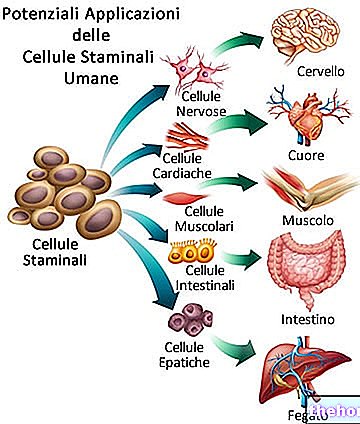Definition of lymphedema
Lymphedema is a clinical condition characterized by a huge and exaggerated accumulation / stagnation of lymph in the tissues.
Lymphedema, typical of the lower or upper limbs, is the immediate consequence of a blockage or impairment of the lymphatic system. On the basis of the triggering causes - analyzed in the previous article - we have distinguished lymphedema into primary and secondary.

Symptoms
Chronic swelling of the limbs (edema) is undoubtedly the characteristic symptom of lymphedema. Generally, lymphedema occurs in the lower or upper limbs and is asymmetrical, that is, it appears in only one limb. However, some patients develop lymphedema in both legs or arms: in similar circumstances, one limb is visibly more swollen than the other.
Clearly, not all lymphedema are the same: the swelling can be more or less important depending on the severity of the condition. In some patients a slight swelling of the affected limb is observed, while in others the clinical picture can degenerate into true elephantiasis.
In addition to chronic edema, the patient suffering from lymphedema may complain of other symptoms, listed below:
- Alteration of the color of the skin. Along the limb affected by lymphedema, it is not uncommon to observe a change in the color of the skin: the skin tends to discolor and becomes shiny
- Difficulty moving or bending the limb affected by lymphedema
- Thickening of the skin
- Fragile skin, susceptible to infections
- Constant perception of weight and constriction of the limb affected by lymphedema
- Itching and tightness of the skin of the involved limb
Lindefema is not a painful disease in itself; rather, the "pain" reported by patients refers to the constant feeling of oppression, a consequence of localized swelling.
Diagnosis
The diagnosis of lymphedema is essentially clinical, ie it consists in the "direct medical observation of the involved limb." The differential diagnosis must be made with all pathologies marked by edema.
As analyzed, lymphedema tends to affect a single limb (one-sidedness or asymmetry of the pathology): this aspect is of primary importance to distinguish lymphedema from other more serious pathologies. The differential diagnosis must be made with edema dependent on:
- congestive heart failure
- kidney failure
- liver failure
Even in the aforementioned pathologies, edema is a very recurrent symptom; in similar circumstances, however, the stagnation of liquids involves both of them the limbs. In lymphedema - let us remember once again - swelling tends to affect - only or at least mainly - a single limb.
Imaging techniques such as magnetic resonance imaging (MRI), computed tomography (CT), lymphoscintigraphy *, and echo-color Doppler can be used to ascertain a suspicion of lymphedema.
* lymphoscintigraphy: is a diagnostic imaging technique, useful for obtaining a "general picture of the lymphatic system (lymph nodes and lymphatic vessels).This test is performed by injecting radioactive substances (radiocolloid) directly into the subcutaneous region relating to the lymphatic district to be analyzed. The recording of the images allows to study the lymph nodes and the possible compromise of the lymphatic system, highlighting the sectors in which the lymph stagnates.
Therapies
There is no definitive cure for lymphedema. However, affected patients must still follow a specific therapy program to reduce edema and improve functional disorders caused by the disease.
MANUAL LYMPH DRAINAGE is one of the pillars of therapy: through this manual massage, the lymphatic system is mechanically stimulated. Lymphatic drainage is an extremely effective technique to reduce the swelling of lymphedema: the lymph nodes are "emptied", therefore the drainage of stagnant lymph from the tissues is favored. The emptying of the lymph node stations consequently improves the kinetics of the entire lymphatic circulation.
BANDAGE, PRESSOTHERAPY and the use of ELASTIC BRACES are also therapeutic measures indicated to reduce edema.
We talk about complex decongestive therapy (CPD) when two or more treatments (just listed) are combined.
Complex decongestive therapy should not be used in patients with hypertension, diabetes, paralysis, heart failure, acute skin infections, cancer or thrombosis.
Clearly, it is necessary to trace the triggering cause of the lymphedema: for example, if an underlying bacterial lymphangitis is diagnosed, specific antibiotic therapy must be undertaken.
Some lymphedemas require SURGERY to remove excess tissue from the limb affected by lymphedema. Although surgery can significantly relieve swelling, lymphedema cannot be cured completely.




























